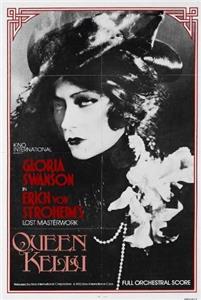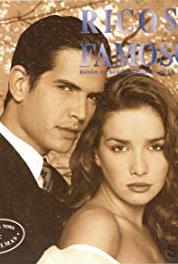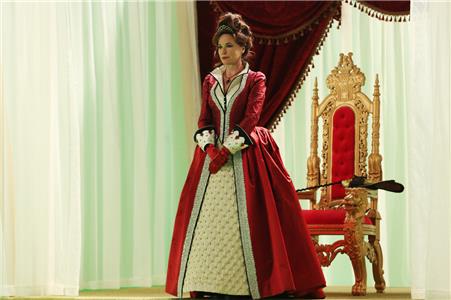Queen Kelly (1932) Online

Prince Wolfram is the betrothed of mad Queen Regina V of Kronberg. Supreme ruler, her word is law and he is a playboy. On maneuvers as punishment for partying with other women, he sees Kelly walking the the other students of a convent. He is intrigued by her beauty and wants her. He kidnaps her that night from the convent and takes her to his room and professes his love for her. When the Queen finds them together the next morning , she whips Kelly and throws her out of the castle. Regina then puts Wolfram into prison for not wanting to marry the Queen. Kelly goes to German East Africa to visit her dying Aunt and is forced to marry the disgusting Jan. The Aunt dies after the wedding and Kelly refuses to live with Jan and becomes the head of Aunties Brothel. Her extravagances and style earn her the name 'Queen Kelly' and Prince Wolfram does not marry Queen Regina V.
| Complete credited cast: | |||
| Gloria Swanson | - | Kitty Kelly / Queen Kelly | |
| Walter Byron | - | Prince Wolfram | |
| Seena Owen | - | Queen Regina V |
When Tully Marshall dribbled tobacco juice on Gloria Swanson's hand during the wedding sequence and explained that director Erich von Stroheim ordered him to do it, it was the final straw. She called producer Joseph P. Kennedy and demanded that von Stroheim be fired. He was, effectively shutting down the production.
According to the crew members who worked on this film, the girls who accompany Wolfram to the palace gates were played by actual prostitutes who worked at one of the best brothels in Hollywood.
A clip from the film appears in Boulevard der Dämmerung (1950), where Norma Desmond (played by Gloria Swanson), a silent movie star who is planning a comeback, watches one of her former films. Erich von Stroheim plays Max Von Mayerling, Desmond's butler, who serves as projectionist for the film clip. It is later revealed that Max was the silent movie director who discovered Norma Desmond. Director Billy Wilder recalled that it was von Stroheim's idea to use the clip from _Queen Kelly_ (1932) in Boulevard der Dämmerung (1950), as a way of "art imitating life."
Although Boston banker and broker Joseph Kennedy, father of the future president, and then lover of Gloria Swanson, was very active in re-organizing and managing Hollywood film studios in financial trouble, this is one of the only films that he personally produced. It was also to be one of his last, as he and his backers lost a fortune when he was forced to fire von Stroheim, and his mistress refused to return for reshoots and a new story. Shortly after, Kennedy ended his role in Gloria Productions, then sold his interests in Pathe pictures, and ended his involvement in the film business. In the next decade, he began a political career--first as a backer of FDR who appointed him head of the Security Exchange Commission, and then ambassador to the Court of St. James. Irish Kennedy's anti-English feelings so embarrassed Churchill that he forced FDR to recall Kennedy, thus ending his political ambitions. Joseph spent the rest of his life managing his son's ascent.
Gloria Swanson hosted a US television broadcast of the film in 1966. The version that aired featured the European ending.
After shooting only one-third of the picture (four hours), director Erich von Stroheim was fired by producer-star Gloria Swanson. Two years later, additional footage was shot to complete the picture. Since von Stroheim owned part of the property, he refused to grant releasing rights in the U.S. and elsewhere for this bastardized version. It was not exhibited in the U.S. until after Boulevard der Dämmerung (1950), when it received minor theatrical release and a showing on television in 1966.
In 1931, Gloria Swanson hired Gregg Toland to shoot some additional scenes for release in Europe in 1932. These consisted of Prince Wolfram seeing Kelly's drowned body and committing suicide himself. That scene (in the Force Video alternate version) is not in the 1985 Kino restored version, which continues on to African scenes.
The uniforms worn throughout the Kronburg scenes are all clearly adapted from real Prussian uniforms worn by members of the German army through about 1914. The palace guards all wear the uniform of the Prussian Palace Guard Company. Prince Wolfram and his regiment all wear the helmets and cuirasses (breastplates) warn by the Prussian Garde du Corps (c. 1890s) when they are parading on the Kambach Road. After the banquet scene, Wolfram's adjutant is seen wearing the ceremonial version of the Garde du Corps uniform, which features the 'supraweste' (embroidered red vest) and butcher boots. Director Erich von Stroheim had made a name for himself as a military advisor early in his career, so he was very familiar with the details of such uniforms.
Erich von Stroheim clashed with Paul Ivano numerous times; Ivano would frequently be fired by the exacting director, only to be immediately reinstated by Gloria Swanson.
Erich von Stroheim's production methods were so strenuous that many crew members came down with the flu.
Gordon Pollock was replaced with Paul Ivano after the first day of shooting after some costume tests photographed by Ivano proved to be much more satisfactory than the scenes (from the Kambach Road sequence) that Pollock had taken.
It has been suggested by film historians that Erich von Stroheim's first choice for Wolfram was Norman Kerry, with whom he had worked in Merry-Go-Round (1923). Walter Byron was producer-star Gloria Swanson's choice for the role, but von Stroheim claimed to have been dissatisfied with Byron's performance.
Had the film been shot as Erich von Stroheim had intended, its running time would have been about four hours.
Producer Walter Futter purchased the negative for the film in 1939 for $10,000. Apparently he wanted to make use of footage from the European sequences to cheaply make a spy thriller set in a fictitious Balkan country. No such film was apparently ever made.
Erich von Stroheim reportedly spent over 24 hours shooting the scene in which Queen Regina, played by Seena Owen, is introduced in her boudoir. Owen had to be nude, covering her chest with a white cat. After a few takes the cat began to scratch her and had to be fitted with mittens.
Erich von Stroheim recycled many plot elements from the (mostly not-filmed) African scenes from this film into a script he wrote in 1933 called 'Poto-Poto'. The script was submitted to studios for consideration but was never purchased or filmed.
The first scenes for the film were the meeting between Kelly and Wolfram on Kambach Road.
The fictional capital city in which the European scenes take place is called Kronberg. There is in fact a real town called Kronberg im Taunus, in Hesse, Germany.
Although Boston banker and broker Joseph Kennedy, father of the future president, and then lover of Gloria Swanson, was very active in re-organizing and managing Hollywood film studios in financial trouble, this is one of the only films that he personally produced. It was also to be the last, as he and his backers lost a fortune when he was forced to fire von Stroheim, and his mistress refused to return for reshoots and a new story. Shortly after, Kennedy sold his last interests in Pathe pictures, and ended his involvement in the film business. In the next decade, he began a political career--first as a backer of FDR who appointed him head of the Security Exchange Commission, and then ambassador to the Court of St. James. Irish Kennedy's anti-English feelings so embarrassed Churchill that he forced FDR to recall Kennedy, thus ending his political ambitions. Joseph spent the rest of his life managing his son's ascent.
Erich von Stroheim: [janitor] Wolfram returns to the palace after a night of drunken revelry and passes a cleaning person with a vacuum cleaner on his way up the palace's grand staircase.
Erich von Stroheim: [prostitution] Prince Wolfram and his adjutant arrive at the palace in the opening scenes accompanied by a group of prostitutes. Kelly is also later sent to live in a brothel in Africa, which she takes over.
The scene on the Kambach road was originally shot as scripted, with Kelly loosing her pantaloons and Wolfram picking them up with his sword, pretending to pocket them, and then returning them to her before riding off. After star Gloria Swanson finished her portion of the scene, Erich von Stroheim reshot the scene with Walter Byron giving the bloomers a sniff. This change in the sequence infuriated Swanson, who found it distasteful and 'unthinkable' for inclusion in a film.








User reviews